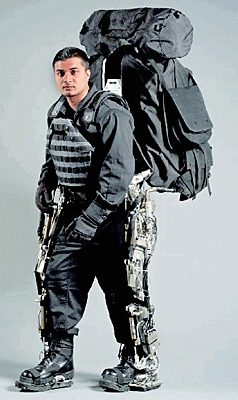Robots: Humanoids
(for robots, a new way of walking like humans)
Humanoid Robots Improving their Walking Procedures
- In 2005, a new generation of robots revolutionized the way humanoids walk, which is one of the greatest challenges in mechanical engineering.
- They followed Honda's ASIMO which is based on technology that is much like that of a shuffling windup toy.
- Every maneuver is part of a programmed pattern, each posture a frozen moment in time, and an enormous amount of energy is needed to keep the body struggling along in a stiff-looking walk.
- A nameless robot unveiled by engineers at Cornell University in February, 2005, is modeled after antique toy figurines that progress down a slope, motivated only by gravity.
- The Cornell robot is the first to use principles of passive-dynamic walking to stroll on level ground, employing electrical energy equivalent to the metabolic energy a human would use.
- Most of the joints swing freely, naturally shifting mass like a pendulum.
- Another robot, named "Rabbit", designed at the University of Michigan and the University of Nantes in France, may be the first to run in strides that look human.
- Its creators have made it dynamic, balancing on two points—it has no feet—and with the ability to adjust to obstacles and changes in surface irregularities.
- Unlike ASIMO, which cannot balance in a fluid way, Rabbit can be shoved violently and regain its stability without falling over.
Soldiers can now operate with the strength of electronic sensors

This is the Berkeley lower-extremity exoskeleton (Bleex). The "Bleex One" has been in the works for a while and it seems work has begun on the second prototype, the "Bleex Two". The exoskeleton system has two hydraulic leg braces that include 40 electronic sensors, a monitoring computer and an internal-combustion engine.
The exoskeleton is attached to the legs of the soldier and allows for backpack loads upwards of 220 lb. to be carried with ease.
